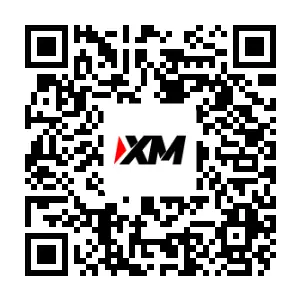Indices Indicators Tutorial Explained
There are many ways to trade in the stock market, with technical analysis and indicators being a very common way to look at how stock prices move. When using technical analysis for stocks, indicators help create different trading strategies.
The most popular stock indicators in the stock market are:
1.MA Indicator
2.MACD
3.RSI Indicator
4.Stochastic Indicator
5.Bollinger Bands Indicator
Moving Average Technical Indicator
Moving average stock indicator is used to identify stock market trend direction. This Moving Average indicator calculates the moving average of stock prices over a particular period of time. This moving average MA technical indicator is a market trend following stock indicator that highlights the direction of the market. Once one determines the direction of the price they can then determine whether to open buy or sell stock trades.
Overlays of Moving Averages are superimposed onto the stock charts and can be utilized to generate trading signals via the subsequent methodologies.
The Moving Average Indicator in the Context of Indices
- Indices Price Period of Moving Averages(MA)
- SMA, EMA, LWMA & SMMA Explained
- Identifying Trends in MA - Indices Indicators
- Moving Average Tool False Signals in Range Trading Market
- MA Cross Over Indices Trade Method
- Support & Resistance Zones from MA in Indices Trading
- Trying to pick a moving average to trade with? Here's how to choose.
- Short-Term and Long-Term Moving Average Indicator Arrangements.
- A Moving Average (MA) Indicator Strategy Based on a 20 Pips Price Range for Stock Indices
RSI
RSI is used to measure the momentum of a trend. The RSI highlights trading prices are closing higher than where they open when the RSI is above 50 center mark and this means stock traders should open buy stock trades. When RSI is below 50 center mark it means stock prices are closing lower than where they open and stock traders should only open sell stock trades.
RSI spots overbought conditions above 80 and oversold below 20. These levels help gauge market extremes.
RSI can be used to generate trade signals based on following methods:
RSI Stock Indicator - Indices Indicators Course
- RSI Stock Index Indicator Over-bought and Over-sold Levels
- Divergence Setups Using the RSI Indicator for Stock Indices
- Developing Strategies Based on Classic Bullish and Classic Bearish RSI Divergence for Indices
- RSI Hidden Bullish & Bearish Divergence Strategy in Stock Indices
- RSI Stock Indices Indicator Swing Failure Strategy
- RSI Setups with Trendlines for Stock Indices
- RSI Stock Indicator Study Summary
Bollinger Bands Indicator
The Bollinger Bands indicator is instrumental in identifying market trends and defining the upper and lower bounds of stock price movements. These boundaries help traders determine optimal entry and exit points for their trades, ensuring better decision-making based on calculated data.
The Bollinger Bands indicator can generate signals through the following methods:
Bollinger Bands Indicator Analysis
- Understanding the Functionality of Bollinger Bands Indicator
- Bollinger Band Trading Market Volatility Analysis
- Understanding Bollinger Band Bulge and Squeeze Patterns in Analysis
- How do Bollinger Bands show price action in trends?
- Price Action Analysis within Range-Bound Markets Using Bands
- Bollinger Bands: Analyzing Trend Reversals
- Summary of Bollinger Bands Indicator
MACD
MACD helps figure out how strong stock market trends are, and when MACD is above 50, the stock price is going up, but when MACD is below 50, the stock price is going down.
MACD can be used to generate trade signals based on following methods:
Comprehending the MACD Indicator When Applied to Indices
- MACD Fast Line and SignalLine Analysis
- MACD Buy and Sell Signals in Trading Charts
- MACD Indicator Whipsaws and Potential False Signals on Indices
- How to Generate MACD Center Line Crossover Signals
- MACD Classic Bullish and Bearish Divergences on Stock Indexes
- MACD Stock Index Hidden Bullish Divergence & MACD Hidden Bearish Divergence Strategies Methods
- MACD Stock Indicator Summary
Stochastic Oscillator Indicator
Traders use the Stochastic Oscillator all the time to find overbought and oversold levels. These signals help them figure out the best moments to open and close trades.
Stochastic Oscillator can be used to generate signals based on following methods:
·Stochastic Oscillator - Indices Indicators Course
- Three Types of Stochastics Oscillator Indicators
- Functionality of the Stochastic Indicator in Indices Trading
- Identifying Overbought and Oversold Thresholds for Indices via Oscillators
- How do you analyze the Stochastics indicator?
- Stochastic Indicator Crossover Signals
- Stochastic Indicator: Technical Divergence Trade Signals
- Stochastic Trading Indicator System
These tools top the list for stock traders to master. Learning them aids in building strong index strategies.
Traders can blend these indicators to find the best mix for trading or to build a stock system. The Stochastic System example gives a clear way to set one up. Then traders write rules for buy and sell signals from the indicator-based system. Rules also cover closing trades, take-profit spots, and stop-loss levels.
More Guides & Tutorials:
- FX S&P 500 Index
- UKX 100 Trading Strategy Guide and Training Course
- What Is the AEX 25 Trading Approach?
- Stock Index Strategy Guidelines: Write The Stock Index Rules and Follow Them
- Clarification on what a 50% Margin Requirement Signifies for Stock Indices
- What's the minimum you need to trade the JP225 index?

